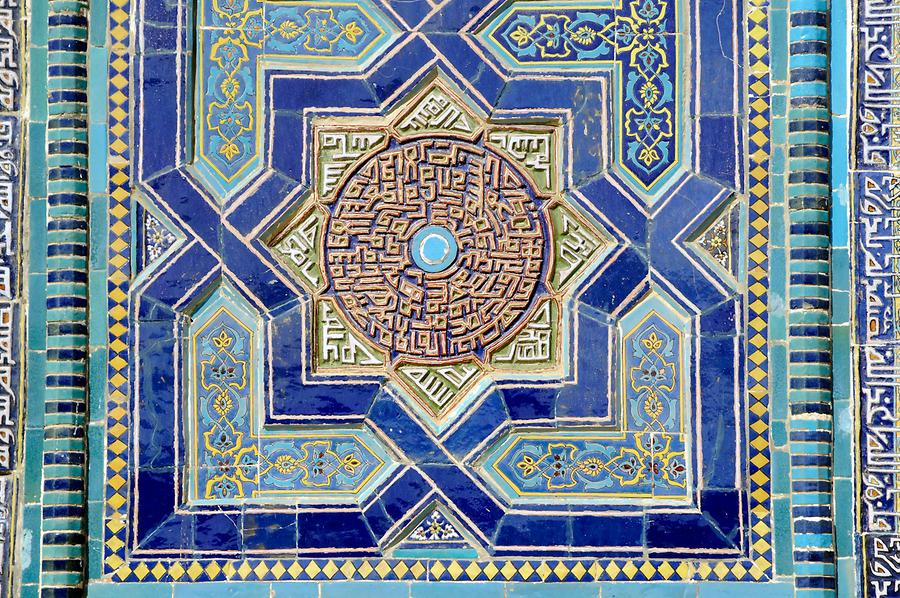Shah-i-Zinda#

Shah-i-Zinda, September 2008, © Gerhard Huber, under CC BY-NC 4.0 +Edu
The perfect tile patterns of the façades radiate an almost meditative effect. The elements of ornament art transcend the cosmic world into a sacred geometry that illustrates the infinity of the universe. Often, the ornaments are combined with calligraphic writings from the Koran, which always refer to the omnipotence of God. The ban on images in Islam is based on a personal dislike of Mohammed. An artist who illustrates human beings and animals in a realistic manner is thought to presume the repetition of the divine creative act, and this borders on blasphemy.
Die formvollendeten Kachelmuster der Fassaden strahlen eine nahezu meditative Wirkung aus. Die Elemente der Ornamentkunst transzendieren die Ordnung der Welt in einer heiligen Geometrie, die die Unendlichkeit des Universums illustriert. Oftmals verbinden sich Ornamente mit kalligraphischen Schriften aus dem Koran, die immer auf die Allmacht Gottes verweisen. Das Bilderverbot im Islam geht auf eine persönliche Abneigung Mohammeds zurück. Ein Künstler, der in realistischer Weise Menschen und Tiere darstellt, würde sich eine Wiederholung des göttlichen Schöpfungsaktes anmaßen und das grenzt an Blasphemie.